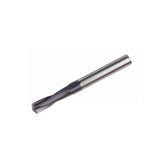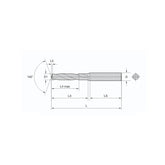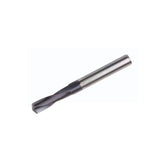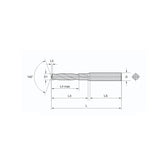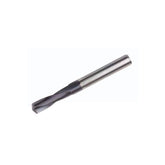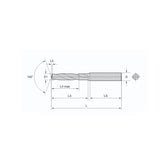What You Should Know - Taboos for Carbide Drill Bit Applications
Taboos for Carbide Drill Bit Applications
Carbide is a powder metallurgy material, primarily composed of tungsten carbide (WC, 88% to 94% by mass) as the hard phase and cobalt (Co, 6% to 12% by mass) as the binder phase. Elements such as titanium (Ti), niobium (Nb), or tantalum (Ta) are added to enhance the tool's hardness or improve its toughness and high-temperature resistance.
Although carbide drill bits have excellent comprehensive performance, they are expensive. Therefore, when using carbide drill bits, attention should be paid to the following points:
-
Select the appropriate machine tool
- Carbide drill bits are suitable for CNC machine tools and machining centers, which are high-power and high-rigidity machines, with a tip runout (TIR) ≤ 0.02mm.
- They should not be used on radial drilling machines or universal milling machines due to their low power and poor spindle accuracy, as this can lead to early chipping of the carbide drill bits.
-
Select the correct tool holder
- Spring collets, side-lock tool holders, hydraulic tool holders, and thermal expansion tool holders can all be used.
- Quick-change drill holders should be avoided because their clamping force is insufficient, which can cause the drill bit to slip and fail.
- For spring collets, the clamping length of solid carbide drill bits should be 4 to 5 times the diameter of the drill shank to ensure secure clamping.
-
Correct cooling
- For external cooling, attention should be paid to the combination of cooling directions to form a stepped configuration from top to bottom, and the angle with the tool should be minimized as much as possible.
- For internal cooling drill bits, attention should be paid to the pressure and flow rate of the coolant, and leakage should be prevented to ensure effective cooling.
-
Correct drilling process
- When the entry surface inclination is greater than 8°-10°, drilling is not allowed.
- When the entry surface inclination is less than 8°-10°, the feed rate should be reduced to 1/3 to 1/2 of the normal value.
- When the exit surface inclination is greater than 5°, the feed rate should be reduced to 1/3 to 1/2 of the normal value.
- When drilling intersecting holes, the feed rate should be reduced to 1/3 to 1/2 of the normal value.
-
Select appropriate cutting parameters
- Appropriate cutting speed has a significant impact on processing efficiency and tool life. High cutting speeds can improve processing efficiency but also accelerate tool wear. Therefore, cutting parameters should be chosen to balance processing efficiency and tool cost.
Tags:
